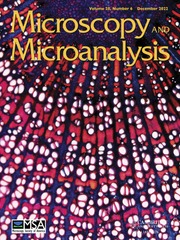Article contents
Gold-Based Autometallography
Published online by Cambridge University Press: 02 July 2020
Extract
Gold labels such as Nanogold® and colloidal gold are enlarged and visualized in the electron microscope or optically by the selective deposition of silver onto their surfaces. This process, known as autometallography (AMG), silver amplification or silver enhancement, is initiated by exposing the particles to a solution containing silver (I) ions and a reducing agent such as hydroquinone or npropyl gallate. Particles may be enlarged to between 30 and 100 nm in diameter, giving a distinctive black, punctate staining in the light microscope. Nanogold® labeling with silver amplification is one of the most sensitive methods available for histopathology applications such as in situ hybridization. With Catalyzed Reporter Deposition (CARD; also called Tyramide Signal Amplification, or TSA® ; NEN Life Sciences, Boston MA), it has been used to detect as few as 1-2 copies of viral DNA or RNA per cell. However, its uses are restricted by reactions of silver (I) with halides and other elements in tissues. Also, after signal development, self-nucleation and non-specific background deposition begin quickly, which can make end-point selection difficult or prevent incorporation into automated procedures.
- Type
- Biological Labeling and Correlative Microscopy
- Information
- Copyright
- Copyright © Microscopy Society of America
References
- 6
- Cited by


